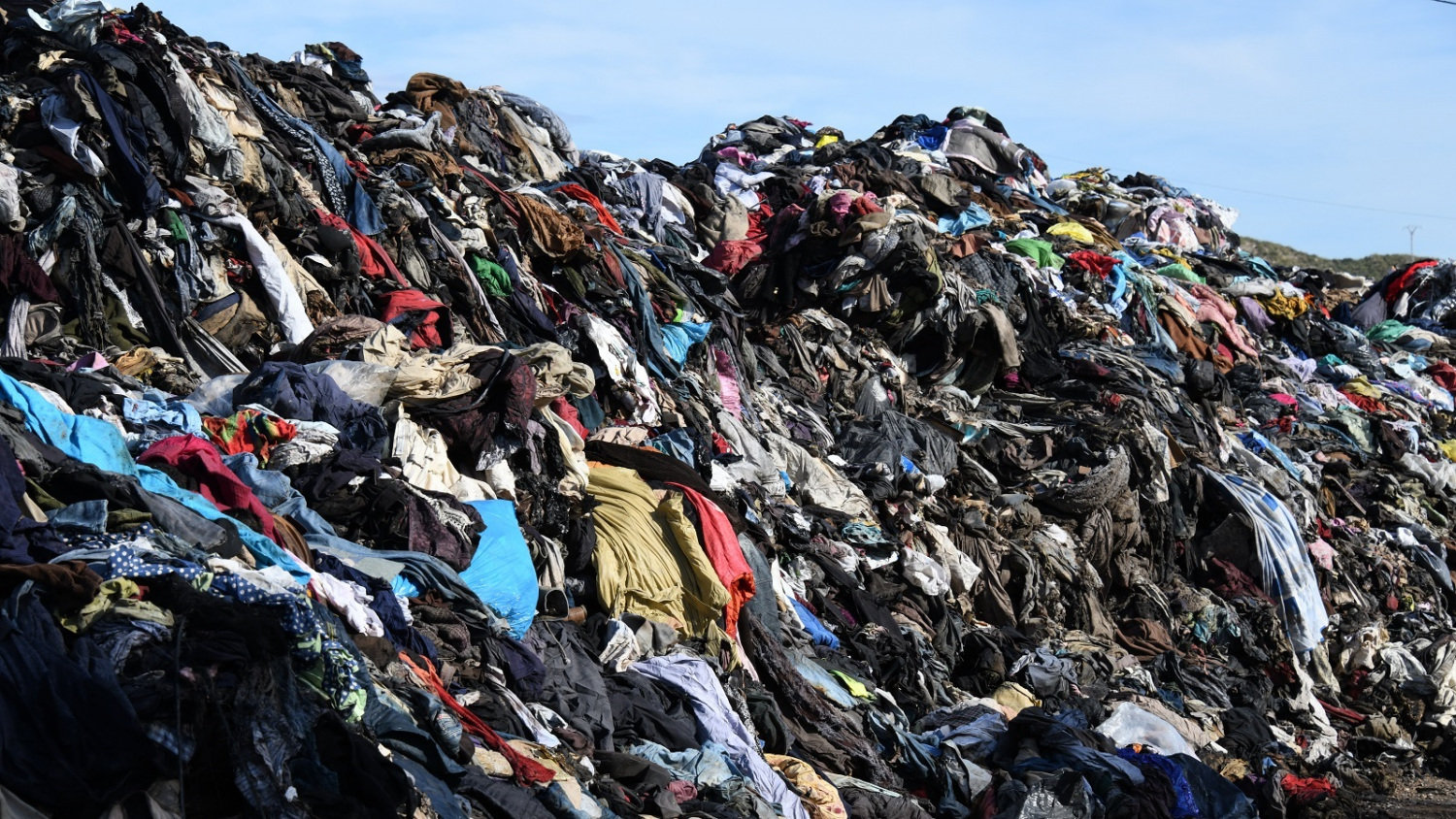Fast Fashion-An Ecological Embarrassment
March 23, 2024 | Expert Insights

Ecology studies the symbiosis and relationships between living beings. It encompasses both human-nature and human-human relationships. Anthropocentric development has often undermined the delicate balance of the symbiotic linkages between humans and nature and one another, with fast fashion being one of the most pronounced pieces of evidence.
Its multifaceted effects on the environment and its dehumanising productive nature put a scourge on the footprints we leave behind.
Background
When we think about fast fashion, the terms affordability, availability, speed, and convenience come into the picture. It rapidly became a complex and output-based industry structure as it was “the first major industry in human history that lacked locally procured raw materials”.
Evidence has shown that every developed nation had a cotton-manufacturing or "T-Shirt" phase in their economic growth because it became extremely easy to manufacture cotton at an unprecedented speed and accuracy through industrialisation. Through Britain's industrialisation came an emerging working class who lacked the time to make garments and could afford readymade clothes. It was one of the first nations whose technological progress, a newfound consumer market, and government practices and policies like the enclosure movement fostered them to spearhead this process of manufacturing imported raw cotton into mass products. The import price of raw materials from regions like the West Indies, Brazil, the Ottoman Empire, and India decreased. At the same time, the export cost of the final product increased because of technological superiority. This generated mass amounts of revenue for their country at the expense of developing countries and their populations. In addition, cotton production is not environmentally friendly despite being a natural fibre. Pesticides used in cotton production pose significant health concerns to farmers.
Now, the true nature of consumer behaviours in the fast fashion industry chooses to overlook the despicable collateral damage attributed to it. According to the UN Environment Programme (UNEP), the industry is the world's second-largest consumer of water and accounts for around 10 per cent of global carbon emissions, equivalent to the EU and greater than the entire international aviation and shipping industry combined. The quick use-and-throw tendencies to keep up with the latest fashion trends cause 85 per cent of all textiles to go to dumps yearly. Fast fashion is also one of the primary users of plastic fibres, synthetic materials made using petroleum like polyester and nylon, which render microplastics into the environment. Plastic fibres comprise over 50 per cent of garment products and 40 per cent of fibre output worldwide. The International Union for Conservation of Nature (IUCN) estimates that 35 per cent of all microplastics, the microscopic debris of non-biodegradable plastic in the ocean, result from synthetic textile laundering. Global pollution impacts of the fast fashion industry are reported to be 36 per cent from dyeing and finishing, 28 per cent from yarn preparation, and 15 per cent from fibre production. Every year, washing garments absolves 500,000 tonnes of microfibres into the ocean, comparable to 50 billion plastic bottles. As reported in an analysis of the fast fashion industry, many natural resources go into fibre production each year, including 145 million tons of coal and approximately 2 trillion gallons of water. Making textiles from plastic fibres consumes a significant amount of energy. It uses a lot of petroleum and emits harmful emissions such as volatile organic compounds, particulate particles, and acid gases like hydrogen chloride.
Fast fashion emphasises rapid design, production, distribution and marketing of readymade garments. Retailers get a variety of options for customers at lower prices. China produces more than 50 per cent of the world's polyester and 10 per cent of its textiles. The garment industry does well in developing countries because of low entry barriers to the market and large-scale unskilled workers characterise it. According to Elizabeth Economy, senior fellow and director of Asia Studies at the Council on Foreign Relations, only 10 per cent of China's environmental rules and regulations are being enforced.
The workforce enabling this production rate extorts wage-working men, women and children from developing and underdeveloped nations. A 2018 investigation by the United States Department of Labour discovered evidence of forced and child labour in the fashion sector in Argentina, Bangladesh, Brazil, China, India, Indonesia, the Philippines, Turkey, and Vietnam, among other places. In saying this, the conditions for farmers were so bleak that many would give up toiling on the unpredictability of the land and work in factories with minimal wages and inhumane working conditions and hours. The Environmental Protection Agency (EPA) deems many textile manufacturing facilities dangerous, causing production to shift to underdeveloped and developing nations with limited infrastructure.

Analysis
The phenomenon of fast fashion is undeniably linked to issues of consumer behaviour. There is a clear sign of abandonment of ecology in the development and supply chain complexities of the fast fashion industry, both between humans and nature. The American South's abundant resources, including land, labour, capital, and political strength, enabled the US to outperform other cotton-producing nations. The industry, especially cotton's productivity, would not have developed at the same level of intensity without the rate of plantation slavery. Cotton exports from South Carolina surged from less than 10,000 pounds in 1790 to 6.4 million pounds in 1800 due to this reorganisation of labour during industrialisation. According to the Environmental Protection Agency (EPA), the average American discards approximately 68 pounds of textile materials annually. Even now, the biggest fast fashion brands like Zara, UNIQLO, Forever 21 and H&M have been criticised for their wasteful trends. However, the fashion industry transitioned from one only the elite could afford to a wide-scale market, globally adored for providing the latest looks for a fraction of the price.
The market caters to people's wants, but a fundamental philosophical yet essential aspect of human nature is that people's wants are always beyond their needs. In this industry, it is all about wanting what you can have. According to the United Nations Framework Convention on Climate Change, emissions from textile manufacturing exclusively are expected to increase by 60 per cent by 2030. It becomes alarming to realise that all efforts taken to mitigate and manoeuvre around the climate crisis are still up against business-driven trends that keep up with the phenomenon of consumers purchasing new clothes every week. People have become aware of the use of plastic bottles, and many have begun steering away from them, not realising that their clothes are made using the same materials and are causing more damage to the water they drink from steel or glass bottles. There is no technological fix for the issue of fast fashion because of the very nature it exists to cater to; the real solution lies in the behaviour of the consumers.
Assessment
- The fast fashion industry thrives on the consumer's desire for newness, often at the cost of environmental and social ethics.
- The fast fashion model has democratised access to trendy clothing, moving the fashion industry away from exclusivity to mass accessibility. However, this has come at a great cost to the environment and ethical labour practices.
- This lack of strict regulation allows the fast fashion industry to continue its environmentally harmful practices with minimal accountability. However, only a fundamental change in consumer behaviour, emphasising sustainability and ethical consumption, can mitigate the industry's adverse effects.








Comments